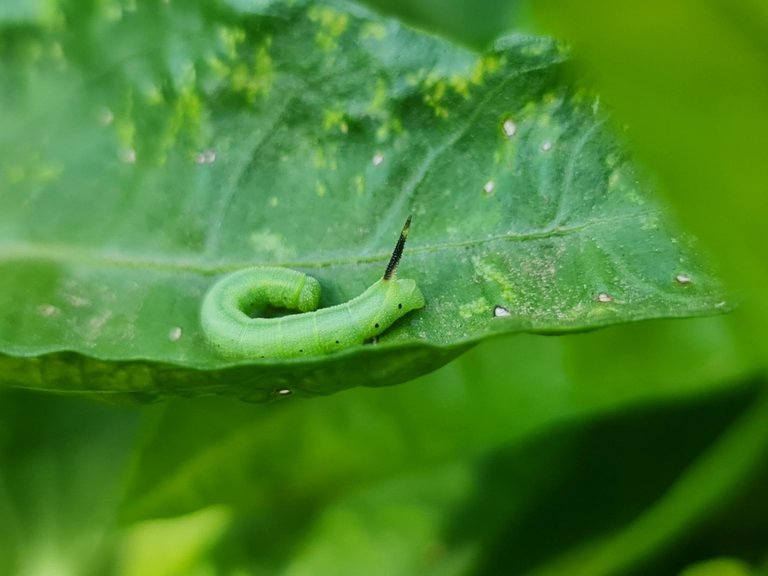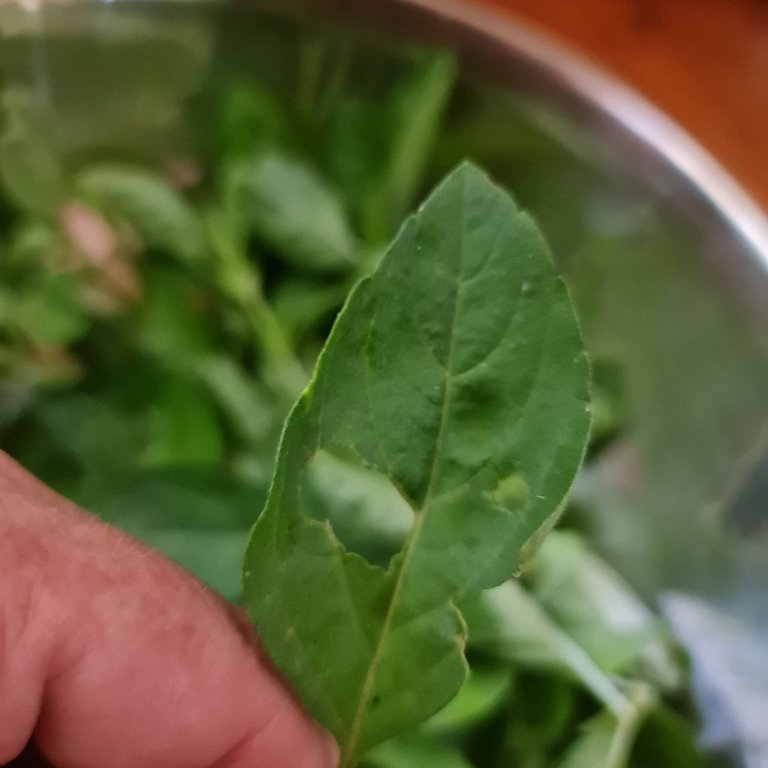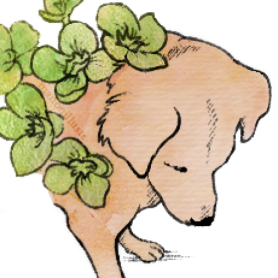Bug bites
Traditionally, one is told not to include damaged leaves in your herb harvest. Do you use bug damaged plant parts in your remedies?
I do! Many of the constituents that we plant people find beneficial are the product of a plant, either for its own protection from environmental stresses or direct attack such as a bug bite. When it considers itself under attack, it creates chemical defenses that change the taste and smell of the plant, making it unpalatable or even toxic to its attacker.

Here’s an everyday example that many of us can associate with. If you’ve ever had a lawn, you may have noticed that the more that you cut your Kikuyu or Couch, the more it grows. This is because to the grass, the mower is attacking it, so it creates and spreads chemical messengers to warm other grasses nearby that it is under attack and to grow faster.
I’ve found that marginally more potent remedies can be made from plants that something has had a bit of a nibble on. You could say that leaves are more bitter once they’ve been bitten 😁

Of course, there are limits to the nibbling. Too much weakens the plant but if you see a leaf or two that has a hole in it or find caterpillars on the plant, include the leaves in your remedy (sans caterpillars of course).
Here’s something to impress your friends with at parties – the constituents created by the plant that are not for everyday metabolism and growth are called ‘secondary metabolites’ and are generally the ones that we can use medicinally.

Some of you may have seen that I've been writing a series of posts about herbs and making herbal remedies at home. I want to share what I know of this topic so that, as the world gets crazier, folks will have other avenues of medical care, namely those of themselves and their community. If you look back over this blog, you can see heaps of info on the topic, plus loads and loads of posts on herbs and using Australian bushfoods from a white perspective. If you haven't been around on in the @hivegarden and @naturalmedicine communities for long, you may be interested in looking back. There's w-a-a-a-a-y too much there for me to repost and the Hive system doesn't let you vote on old posts so, if you're happy with what you find, I believe that there is now a tip option...





I didn't know about secondary metabolites that much. Thanks for sharing.
Always happy to share info.
The plants with a bite work very well as a medicinal, so those inesects bite on those plants are for a reason, an interesting discovery. Happy weekend friend.
That I will. Thanks!
You are welcome.
Conversely, I have been taught by John Kempf that a weak plant is the one they will attack. A healthy plant ALREADY has the strong components and they leave it alone. I've found this to be true in my gardens as I have worked for nearly 20 years to bring a balance of all needed nutrients to it. As I get closer and closer, the pest and disease problems get fewer and fewer.
So, no, I don't use bug eaten things to eat or make medicine.
I think it's a combination of both!
In my anecdotal examples, ALL my bean plants have mealy bugs, yes? But if I forget to water a single one and it becomes stressed, the little pests swarm on that individual. But they are still present on every other plant even though those are in tip top shape! (Oh, I hate scale insects!)
The weakened plants probably make an easy target but I'm sure the healthy ones are better. But the more good they are, there must be a threshold for the bug because they have higher toxic defence?
I wish we could just interview an insect
Thats the usual perspective and one I appreciate too. I posted this because some folks have an absolute fear of using anything slightly nibbled and waste that golden opportunity.
Haha i love the doggy picture!
This makes so much sense! I need to try it. I love this series!
The "cry for help" attack response also explains why yellowjackets come in droves scanning the lawn after I mow it, presumably looking for the caterpillar cavalry. Nope, just me.
You got it!
Athena (the dog in the pic) says thanks...woof'!
The picture was done by my son, Marlon who is an amazingly good artist.
Excellent!
Is he still very little?!
Do tell him for me that he is talented!
Thank you for your witness vote!
Have a !BEER on me!
To Opt-Out of my witness beer program just comment STOP below
View or trade
BEER.Hey @proto26, here is a little bit of
BEERfrom @isnochys for you. Enjoy it!We love your support by voting @detlev.witness on HIVE .
He's nearly 30. I'll tell him, thanks!
Indeed. Whatever I harvest from the garden (When I did, not at the moment), I rinse and check for the ACTUAL bugs... but bug bites are not something I avoid on the leaves and such.
!LOL Thank you, learned something new in the post!
lolztoken.com
He always wants everything meow.
Credit: reddit
@ligayagardener, I sent you an $LOLZ on behalf of zakludick
(4/8)
thanks @zakludick !
You're welcome!
Good practice. Bugs aren't that tasty....
!LOL
lolztoken.com
Steal her blanket.
Credit: reddit
@ligayagardener, I sent you an $LOLZ on behalf of zakludick
(2/8)
Delegate Hive Tokens to Farm $LOLZ and earn 110% Rewards. Learn more.
This isn't something that I have thought a lot about! I do really appreciate the philosophy that the protective medicine of plants in part comes from the stressors that they have survived through. As of yet I am undecided on if I use plants that have been very eaten by insects because I am so keen on keeping the insect population healthy in my area, in general I leave those plants -- not because I find the medicine unworthy but rather because I want the insects to have those. Either way I really appreciate this creative contribution to this eco-train community!!
Its all about balance, we've got to leave some for the bugs.